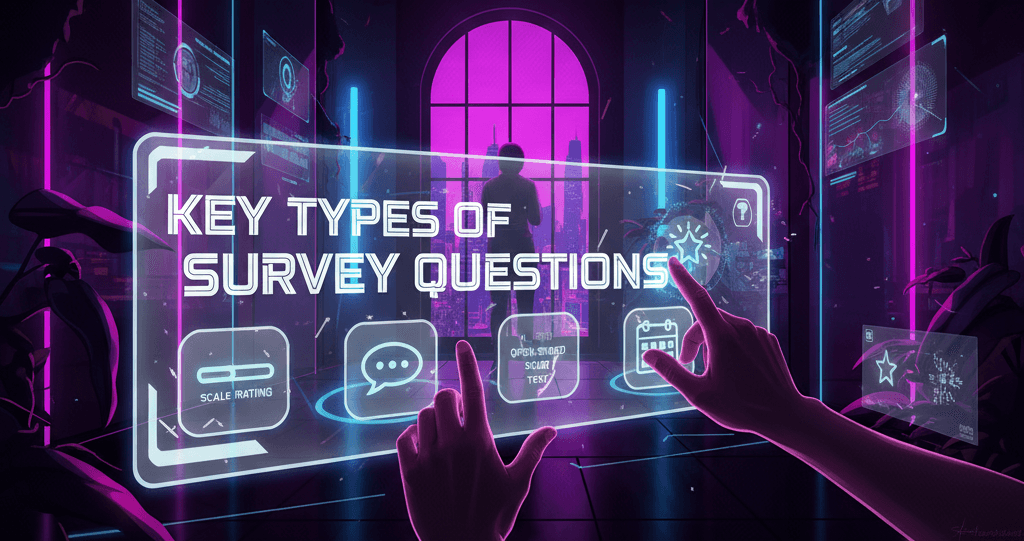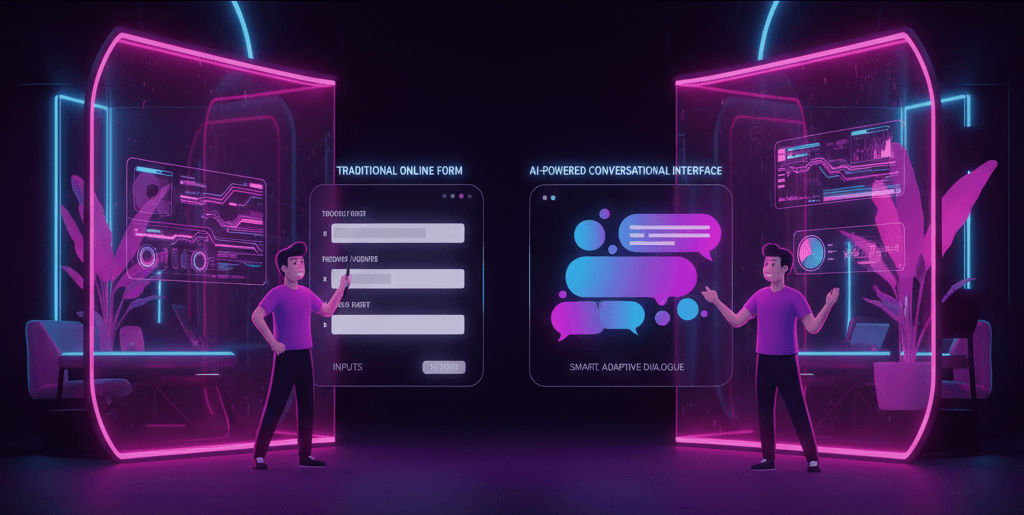If you’ve ever clicked through a form only to abandon it halfway, you’re not alone. The frustration of irrelevant questions, overly long processes, or poor user experience (UX) is something nearly every SaaS customer or support user has faced.
Traditional “one-size-fits-all” forms, the kind that ask the same questions in the same order to every user, are becoming relics of the past.
In today’s hyper-personalized digital landscape, users expect interactions tailored to their needs, context, and behavior.
For SaaS companies and customer support teams, delivering that personalized experience is no longer a nice-to-have; it’s a business imperative.
This is where Artificial Intelligence (AI) is changing the game.
AI-powered adaptive forms dynamically customize every interaction, adjusting questions, workflows, and data capture based on each user’s unique profile and behavior in real-time.
The result? Higher form completion rates, richer data quality, and an improved customer journey from onboarding through support.
In this article, we’ll dive deep into why static forms no longer cut it, how AI adapts forms dynamically, the measurable benefits for SaaS and customer support, practical implementation tips, and the ethical considerations you need to know.
Plus, we’ll glimpse the future of AI in the form of personalization and what it means for your business.
What Are “One-Size-Fits-All” Forms and Why They No Longer Work
Definition and History
Traditionally, forms on websites or in apps have been designed with a static structure: a fixed sequence of questions or fields that every user must complete.
This “one-size-fits-all” approach emerged when web forms were simple data-collection tools, think contact forms, sign-ups, or surveys.
These forms served basic needs but often ignored context, user behavior, or differences in customer segments.
For example, a SaaS product signup form might ask every user the same questions regardless of their company size, industry, or experience level.
Problems with Static Forms
- User Drop-Off: Lengthy, irrelevant forms cause frustration, leading to high abandonment rates. According to Formstack, nearly 70% of users abandon forms because they’re too long or complicated.
- Poor User Experience: Asking irrelevant questions interrupts the flow, making users feel the experience is impersonal or inefficient.
- Low Data Quality: When users get frustrated, they often submit inaccurate or rushed answers, leading to poor data quality for businesses.
- Limited Business Insights: Static forms don’t adjust to capture deeper insights based on evolving user responses, limiting the intelligence you can derive.
- Inflexibility in Customer Support: Support teams relying on static ticket forms miss out on dynamic triage opportunities, slowing resolution times.
Impact on SaaS and Support Teams
For SaaS businesses, poor form design means lost leads, lower conversion rates, and higher churn.
Customer support teams waste time sorting through irrelevant or incomplete information, leading to slower response and resolution times.
Clearly, the traditional model of fixed forms is no longer sufficient to meet modern user expectations or business needs.
How AI-Powered Adaptive Forms Work
Core Technologies Behind Adaptive Forms
AI-powered adaptive forms rely on a blend of technologies:
- Machine Learning (ML): Algorithms analyze user behavior patterns, historical data, and contextual signals to predict which questions are relevant.
- Natural Language Processing (NLP): Understands and interprets user input to dynamically adjust the flow or clarify ambiguous responses.
- Behavioral Analytics: Tracks real-time user actions such as time spent on fields, hover patterns, and correction rates to fine-tune the form experience.
- Dynamic Rule Engines: Enforce business logic that triggers or hides questions based on previous answers or user segments.
Personalization in Action
Adaptive forms use AI to:
- Customize Question Flow: Skip irrelevant questions or reorder based on user profile, reducing form length and effort.
- Offer Contextual Help: Provide tailored tooltips or examples if the AI detects confusion or hesitation.
- Pre-Fill Fields: Auto-complete data from previous interactions or known user profiles to speed up completion.
- Real-Time Validation and Feedback: Catch errors or inconsistencies early, guiding users smoothly through the form.
- Multimodal Input: Allow users to answer via text, voice, or selection, adapting to their preferences and device capabilities.
Examples in SaaS and Support Contexts
Consider a SaaS onboarding form that detects the user’s industry via initial input and then dynamically shows only features and pricing relevant to that sector.
Or a customer support ticket form that analyzes the initial issue description and auto-selects the category, priority, and relevant FAQs to streamline support routing.
Benefits of AI-Driven Adaptive Forms for SaaS Businesses and Customer Support
Increased Form Completion Rates
By tailoring the form experience to each user, AI reduces friction and confusion, dramatically lowering abandonment rates. Studies show personalized forms can boost completion rates by up to 30-40%, directly impacting lead generation and customer onboarding success.
Improved Data Quality and Insights
Adaptive forms collect richer, more accurate data by asking the right questions in the right order and clarifying ambiguous answers. This empowers SaaS companies to make smarter decisions, personalize marketing campaigns, and enhance product development.
Enhanced Customer Experience
Personalized forms show users that the business understands their needs, building trust and loyalty. The smoother, more intuitive form experience reduces frustration and increases satisfaction.
Optimized Support Operations
For customer support teams, AI-adaptive forms lead to faster ticket categorization, smarter routing, and reduced manual triage effort. Agents get better context upfront, improving resolution times and lowering operational costs.
Scalability and Flexibility
AI forms evolve with your business needs and customer base, learning continuously to improve. They can handle complex segmentation and workflows without the need for manual updates, saving time and resources.
How to Implement AI Adaptive Forms: Best Practices
Start with User Data and Segmentation
Leverage existing user data to define key segments and behaviors. Understand what information is essential for each segment and where personalization can add value.
Define Clear Business Objectives
Set measurable goals for form improvements, be it conversion rate uplift, reduced support tickets, or better data quality, to guide your AI implementation.
Choose the Right Technology Partner
Look for AI form platforms or APIs that support dynamic question flows, real-time analytics, and integrate well with your CRM, marketing automation, and support systems.
Design for Transparency and Control
Make sure users understand why certain questions appear or disappear and provide options to edit pre-filled data. Transparency builds trust and reduces abandonment.
Test and Iterate Continuously
Use A/B testing to compare static vs adaptive forms, track key metrics, and refine your models. AI thrives on continuous feedback loops.
Train Support Teams
Ensure customer support agents understand the adaptive form logic so they can interpret collected data effectively and provide seamless assistance.
Ethical Considerations and Privacy
User Consent and Data Privacy
Adaptive forms collect and process sensitive user data in real-time. It’s critical to comply with GDPR, CCPA, and other regulations by obtaining explicit consent and explaining how data is used.
Bias Mitigation in AI Models
AI systems must be regularly audited to avoid reinforcing biases, such as showing different questions based on demographic assumptions that could lead to unfair treatment.
Data Security
Implement robust security measures to protect user data collected via forms, including encryption, secure storage, and strict access controls.
The Future of AI and Personalized Forms
Integration with Voice and Conversational Interfaces
Forms will become more conversational, leveraging voice assistants and chatbots to collect data naturally and intuitively.
Predictive and Proactive Interaction
AI will anticipate user needs before they arise, preemptively customizing forms based on prior behavior and cross-channel signals.
Omnichannel Form Experiences
Users will enjoy seamless, context-aware form experiences across devices and platforms, unified by AI-driven intelligence.
Deeper Business Intelligence
Data from adaptive forms will feed into advanced analytics and decision-making platforms, unlocking new insights about customer journeys and product usage.
Why Choose Zinq.ai for Your AI-Powered Adaptive Forms?
When it comes to implementing AI-driven adaptive forms, Zinq stands out as a cutting-edge solution designed specifically for SaaS businesses and customer support teams seeking to elevate their user experience and operational efficiency.
Zinq leverages advanced machine learning algorithms and natural language processing to deliver truly personalized forms that evolve with your users. Whether you’re onboarding new customers, capturing leads, or triaging support tickets, Zinq.ai ensures every interaction is relevant, intuitive, and efficient.
Key Features That Make Zinq.ai a Game Changer:
- Dynamic Question Flow: Automatically tailor question sequences based on user responses and profiles, reducing form length and increasing completion rates.
- Real-Time Data Validation: Provide instant feedback and error correction, improving data accuracy and saving time.
- Seamless Integrations: Connect easily with popular CRM, marketing automation, and support platforms to streamline workflows.
- Behavioral Analytics: Gain insights into user interactions to continuously optimize form performance and personalize experiences.
- Customizable Templates: Quickly deploy AI-powered forms tailored to different industries and business needs without heavy coding.
- Privacy and Compliance: Built with GDPR and CCPA compliance in mind, ensuring your users’ data is handled securely and transparently.
By choosing Zinq, SaaS companies and support leaders can harness the power of AI without complexity, delivering personalized forms that not only capture more leads and data but also build stronger customer relationships.
It’s the future of forms, intelligent, adaptive, and user-centric, made simple for your business.
Ready to transform your forms and boost your business? Discover how Zinq can help you adapt to every user and start building smarter forms today.
Conclusion
The era of “one-size-fits-all” forms is rapidly coming to an end. AI-powered adaptive forms represent a transformative leap for SaaS companies and customer support teams, enabling personalized, efficient, and insightful user interactions.
By embracing this technology, businesses can increase conversions, improve data quality, enhance customer satisfaction, and streamline operations.
Moving forward, investing in AI-driven personalization will be key to staying competitive and meeting the growing expectations of digital users.
Start today by assessing your current forms, exploring AI capabilities, and crafting a tailored implementation plan that aligns with your business goals.
The future of forms is adaptive, intelligent, and user-centric, and it’s here to revolutionize how SaaS and support leaders engage with every user.












